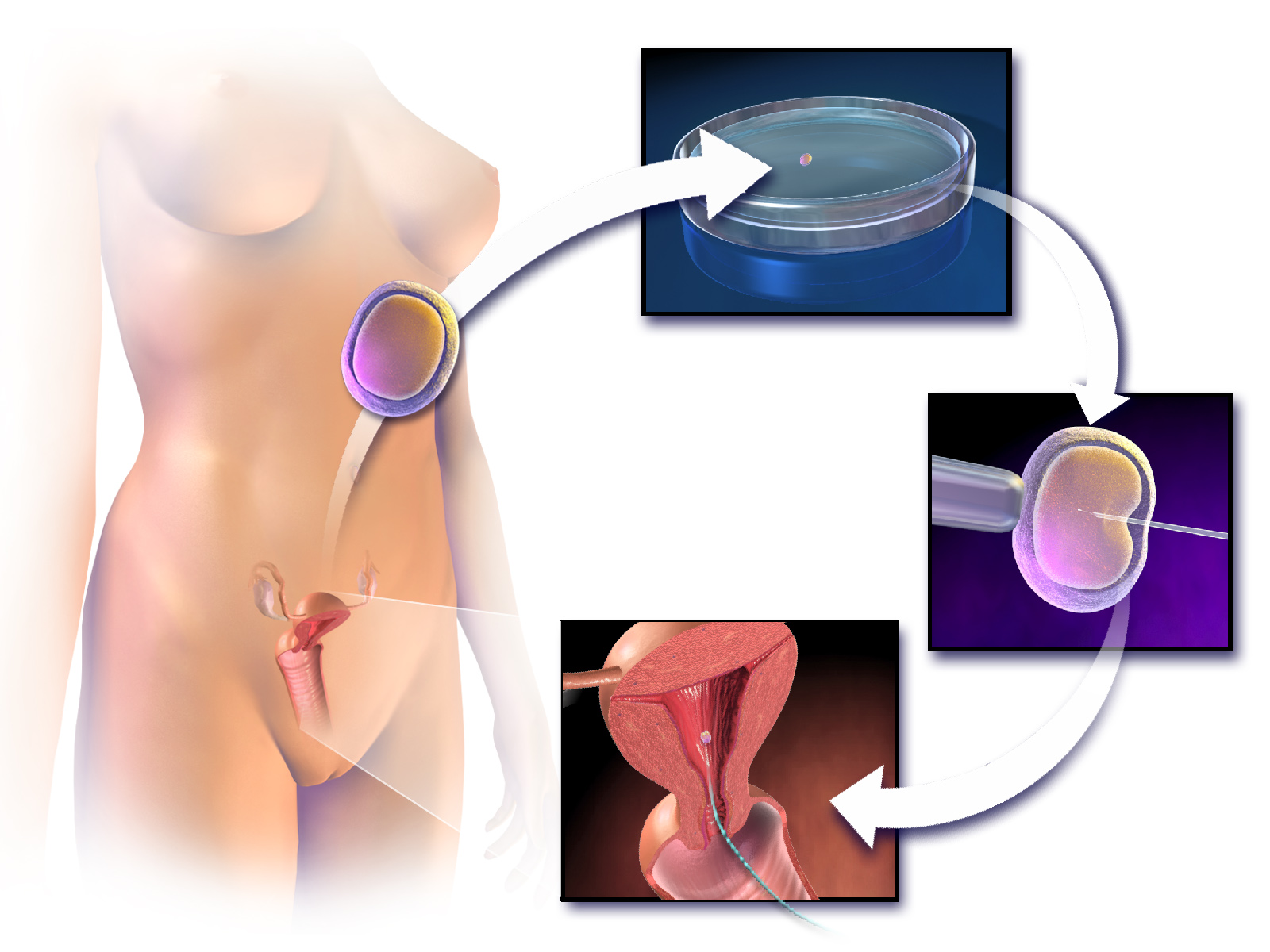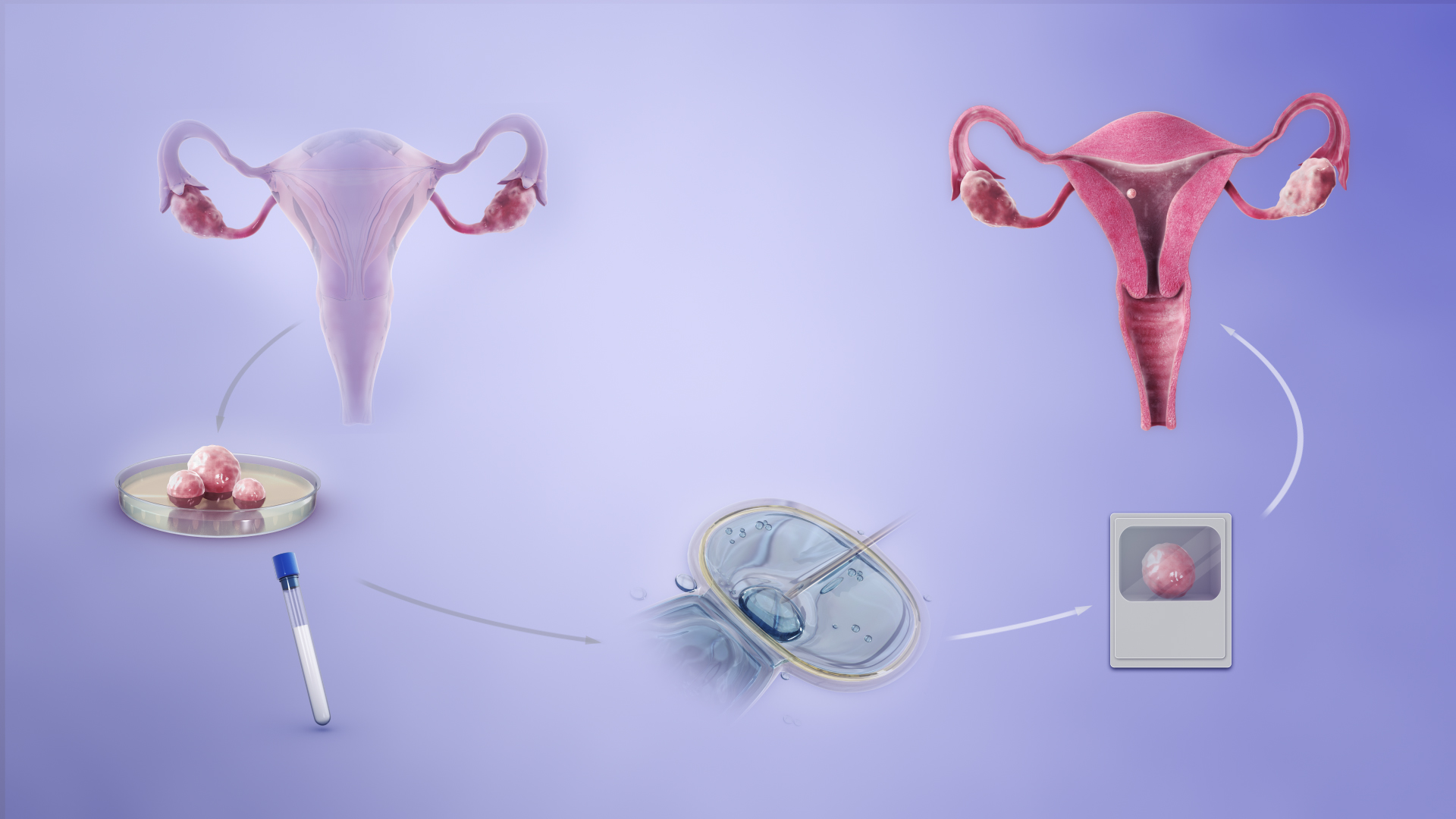|
Hamster Zona-free Ovum Test
The hamster zona-free ovum test (HZFO test), or hamster egg-penetration test, or sometimes just hamster test, is an in-vitro test used to study physiological profile of spermatozoa. The primary application of the test is to diagnose male infertility caused by sperm unable to penetrate the ova. The test has limited value, due to expense and a high false negative rate. Procedure In this test, sperm are incubated with several hamster eggs. After seven to twenty hours, the number of sperm penetrations per egg is measured. The hamster eggs have had the zona pellucida, the outer membrane, removed—hence, ''zona-free''. Having all eggs penetrated by multiple sperm is considered to be a positive sign for fertility. Results suggest that men whose sperm fail the hamster test are a third as fertile than those whose sperm pass. Although medical professionals often present the procedure as unable to create an embryo, these claims are not technically correct. If the human sperm succ ... [...More Info...] [...Related Items...] OR: [Wikipedia] [Google] [Baidu] |
Humster
A humster is a hybrid cell line made from a zona-free hamster oocyte fertilized with human sperm. It always consists of single cells, and cannot form a multi-cellular being. Humsters are usually destroyed before they divide into two cells; if isolated and left alone to divide, they would still be unviable. Humsters are routinely created mainly for two reasons: * To avoid legal issues with working with pure human embryonic stem cell lines. * To assess the viability of human sperm for in vitro fertilization Somatic cell hybrids between humans and hamsters or mice have been used for the mapping of various traits since at least the 1970s. See also * Hamster zona-free ovum test The hamster zona-free ovum test (HZFO test), or hamster egg-penetration test, or sometimes just hamster test, is an in-vitro test used to study physiological profile of spermatozoa. The primary application of the test is to diagnose male infertil ... * Human–animal hybrid * Recombinant DNA Refer ... [...More Info...] [...Related Items...] OR: [Wikipedia] [Google] [Baidu] |
In-vitro
''In vitro'' (meaning in glass, or ''in the glass'') studies are performed with microorganisms, cells, or biological molecules outside their normal biological context. Colloquially called "test-tube experiments", these studies in biology and its subdisciplines are traditionally done in labware such as test tubes, flasks, Petri dishes, and microtiter plates. Studies conducted using components of an organism that have been isolated from their usual biological surroundings permit a more detailed or more convenient analysis than can be done with whole organisms; however, results obtained from ''in vitro'' experiments may not fully or accurately predict the effects on a whole organism. In contrast to ''in vitro'' experiments, ''in vivo'' studies are those conducted in living organisms, including humans, and whole plants. Definition ''In vitro'' ( la, in glass; often not italicized in English usage) studies are conducted using components of an organism that have been isolated from ... [...More Info...] [...Related Items...] OR: [Wikipedia] [Google] [Baidu] |
Sperm Donors
Sperm donation is the provision by a man of his sperm with the intention that it be used in the artificial insemination or other 'fertility treatment' of a woman or women who are not his sexual partners in order that they may become pregnant by him. Where pregnancies go to full term, the sperm donor will be the biological father of every baby born from his donations. The man is known as a sperm donor and the sperm he provides is known as 'donor sperm' because the intention is that the man will give up all legal rights to any child produced from his sperm, and will not be the legal father. Sperm donation may also be known as 'semen donation'. A man provides his semen but the purpose of the donation is that his gametes contained within the semen, i.e. the sperm cells, be used to provide pregnancies for third parties. Sperm donation enables a man to father a child for third-party women and is therefore categorized as a form of third-party reproduction. The process of inseminating ... [...More Info...] [...Related Items...] OR: [Wikipedia] [Google] [Baidu] |
Medical Tests
A medical test is a medical procedure performed to detect, diagnose, or monitor diseases, disease processes, susceptibility, or to determine a course of treatment. Medical tests such as, physical and visual exams, diagnostic imaging, genetic testing, chemical and cellular analysis, relating to clinical chemistry and molecular diagnostics, are typically performed in a medical setting. Types of tests By purpose Medical tests can be classified by their purposes, the most common of which are diagnosis, screening and evaluation. Diagnostic A diagnostic test is a procedure performed to confirm or determine the presence of disease in an individual suspected of having a disease, usually following the report of symptoms, or based on other medical test results. This includes posthumous diagnosis. Examples of such tests are: * Using nuclear medicine to examine a patient suspected of having a lymphoma. * Measuring the blood sugar in a person suspected of having diabetes mellitus afte ... [...More Info...] [...Related Items...] OR: [Wikipedia] [Google] [Baidu] |
Postcoital Test
The postcoital test (PCT), also known as the Sims test, Huhner test or Sims–Huhner test, is a test in the evaluation of infertility. The test examines interaction between spermatozoon, sperm and mucus of the cervix. The PCT examines sperm survival in cervical mucus and determines whether sperm are migrating into the female reproductive system. It does not predict whether pregnancy can occur. The test is performed 1 to 2 days before ovulation, when estrogen-stimulated cervical mucus is abundant. Basal body temperatures or the midcycle luteinizing hormone surge may be used to determine the timing of the PCT. Mucus is withdrawn from the endocervical canal within 8 hours of coitus and examined. The presence of any forwardly motile sperm in alkaline mucus suggests adequate coital technique and a normal cervical mucus–sperm interaction. Procedure The PCT is scheduled close to ovulation when mucus is abundant, and the infertile couple is asked to have sexual intercourse, preferably ... [...More Info...] [...Related Items...] OR: [Wikipedia] [Google] [Baidu] |
Predictive Value Of Tests
Predictive value of tests is the probability of a target condition given by the result of a test, often in regard to medical tests. *In cases where binary classification can be applied to the test results, such yes versus no, test target (such as a substance, symptom or sign) being present versus absent, or either a positive or negative test), then each of the two outcomes has a separate predictive value. For example, for positive or negative test, the predictive values are termed positive predictive value or negative predictive value, respectively. *In cases where the test result is of a continuous value, the predictive value generally changes continuously along with the value. For example, for a pregnancy test that displays the urine concentration of hCG, the predictive value increases with increasing hCG value. A conversion of continuous values into binary values can be performed, such as designating a pregnancy test as "positive" above a certain cutoff value, but this confers ... [...More Info...] [...Related Items...] OR: [Wikipedia] [Google] [Baidu] |
Acrosome Reaction
During fertilization, a sperm must first fuse with the plasma membrane and then penetrate the female egg cell to fertilize it. Fusing to the egg cell usually causes little problem, whereas penetrating through the egg's hard shell or extracellular matrix can be more difficult. Therefore, sperm cells go through a process known as the acrosome reaction, which is the reaction that occurs in the acrosome of the sperm as it approaches the egg. The ''acrosome'' is a cap-like structure over the anterior half of the sperm's head. As the sperm approaches the zona pellucida of the egg, which is necessary for initiating the acrosome reaction, the membrane surrounding the acrosome fuses with the plasma membrane of the sperm's head, exposing the contents of the acrosome. The contents include surface antigens necessary for binding to the egg's cell membrane, and numerous enzymes which are responsible for breaking through the egg's tough coating and allowing fertilization to occur. Variati ... [...More Info...] [...Related Items...] OR: [Wikipedia] [Google] [Baidu] |
Intracytoplasmic Sperm Injection
Intracytoplasmic sperm injection (ICSI ) is an in vitro fertilization (IVF) procedure in which a single sperm cell is injected directly into the cytoplasm of an egg. This technique is used in order to prepare the gametes for the obtention of embryos that may be transferred to a maternal uterus. With this method, the acrosome reaction is skipped. There are several differences between classic IVF and ICSI. However, the steps to be followed before and after insemination are the same. In terms of insemination, ICSI needs only one sperm cell per oocyte, while IVF needs 50,000–100,000. This is because the acrosome reaction has to take place and thousands of sperm cells have to be involved in IVF. Once fertilized, the egg is transformed into a pre-embryo and it has to be transferred to the uterus to continue its development. The first human pregnancy generated by ICSI was carried out in 1991 by Gianpiero Palermo and his team. Round spermatid injection (ROSI) Round spermatid in ... [...More Info...] [...Related Items...] OR: [Wikipedia] [Google] [Baidu] |
Sperm Banks
A sperm bank, semen bank, or cryobank is a facility or enterprise which purchases, stores and sells human semen. The semen is produced and sold by men who are known as sperm donors. The sperm is purchased by or for other persons for the purpose of achieving a pregnancy or pregnancies other than by a sexual partner. Sperm sold by a sperm donor is known as donor sperm. A sperm bank may be a separate entity supplying donor sperm to individuals or to fertility centers or clinics, or it may be a facility which is run by a clinic or other medical establishment mainly or exclusively for their patients or customers. A pregnancy may be achieved using donor sperm for insemination with similar outcomes to sexual intercourse. By using sperm from a donor rather than from the sperm recipient's partner, the process is a form of third party reproduction. In the 21st century artificial insemination with donor sperm from a sperm bank is most commonly used for individuals with no male partner, ... [...More Info...] [...Related Items...] OR: [Wikipedia] [Google] [Baidu] |
Infertility
Infertility is the inability of a person, animal or plant to reproduce by natural means. It is usually not the natural state of a healthy adult, except notably among certain eusocial species (mostly haplodiploid insects). It is the normal state of a human child or other young offspring, because they have not undergone puberty, which is the body's start of reproductive capacity. In humans, infertility is the inability to become pregnant after one year of unprotected and regular sexual intercourse involving a male and female partner.Chowdhury SH, Cozma AI, Chowdhury JH. Infertility. Essentials for the Canadian Medical Licensing Exam: Review and Prep for MCCQE Part I. 2nd edition. Wolters Kluwer. Hong Kong. 2017. There are many causes of infertility, including some that medical intervention can treat. Estimates from 1997 suggest that worldwide about five percent of all heterosexual couples have an unresolved problem with infertility. Many more couples, however, experience ... [...More Info...] [...Related Items...] OR: [Wikipedia] [Google] [Baidu] |



